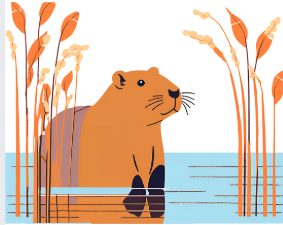The capybara, characterized by its pig-shaped body and partially webbed toes, thrives in aquatic environments such as forests and wetlands. Its long, brittle fur facilitates quick drying on land, while its prominent front teeth are adapted for grazing on grasses and aquatic vegetation. Although currently not classified as endangered, the species faces threats from deforestation, habitat loss, and poaching.
Looking ahead, climate change may alter the capybara's habitat, pushing it towards drier savanna-like environments. This transition could initiate physical adaptations: a reduction in size to lower water and food requirements, the development of a hump for water storage, and skin changes to enhance moisture retention. Additionally, its front paws may evolve to be less webbed for improved escape from predators, while the webbing on its hind paws remains for swimming. Teeth may become sharper to effectively process drier vegetation, and smaller ears may help retain body heat.
Contact us
Thank you for your interest in contacting Future Engineers. We look forward to connecting with you!
General Inquiries
support@futureengineers.orgSponsorship Inquiries
sponsor@futureengineers.org

